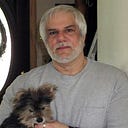Member-only story
How Using Red Light Therapy Can Speed Your Muscle Recovery
Photobiomodulation, also known as RLT, increases muscle endurance and speeds muscle recovery.
When I began researching Red Light Therapy (RLT) also known as photobiomodulation (PBM), I realized I needed this badly. Practicing martial arts at my age (65) is challenging. The aches and pains usually associated with working out amps up with age. As soon as my muscles cool off from the work out and drills, usually within an hour from leaving the Dojo, my muscles and joints ache.
For all the information presented in this article the following terms; Red Light Therapy, RLT, photobiomodulation and PBM mean one and the same, and may be used throughout the text interchangeably.
First photobiomodulation is not snake oil. The technology was adopted by NASA in the 1990s, as a methodology to increase wound healing for space faring astronauts. Today there are literally thousands of clinical, scientific peered review studies on the efficacy of Red Light Therapy (RLT) treatment for a wide variety of conditions.
One researcher I follow is Dr. Michael Hamblin. A Harvard University professor and the lead researcher at the Wellman Center for Photomedicine at Massachusetts General Hospital. He has published over 400 peer-reviewed…
